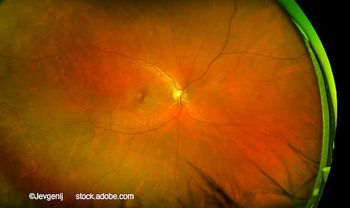
Corneal endothelium characteristics vary depending on patient ethnicity
With ‘surprise’ finding, results may help indicate future corneal pathology that may occur
A high prevalence of polymegatism, pleomorphism, and guttata were seen in a study of corneal endothelium changes among an elderly Hispanic population
Reviewed by Jorge Luis Domene Hickman, MD
A study focusing on corneal endothelium changes found that an elderly Hispanic population had a high prevalence of polymegatism, pleomorphism, and guttae, said Jorge Luis Domene Hickman, MD. The results could help to indicate
Diving deeper
A total of 42 patients (22 male, 20 female) and 75 eyes were included in the study. All of the patients were at least 65 years old, with a mean age of 73.9 years. Researchers assessed the central region of the corneal endothelium with specular microscopy (EM-3000, Tomey) to calculate the study’s corneal parameters, including corneal pachymetry.
Study participants were classified in 5-year age ranges, such as 65 to 69 years, 70 to 74 years, etc. All eyes in the study were healthy. Exclusion criteria included previous ocular surgery, glaucoma, and photocoagulation, Dr. Hickman said.
Polymegatism was considered when the coefficient of variation of the cell area was higher than 40%. Pleomorphism was considered when fewer than 50% of the cells were six-sided.
Analyzing results
The mean cell density among patients was 2,268 cells/mm2, with no statistically significant difference between males and females (p = 0.15). The mean corneal thickness was 0.537 mm. The mean coefficient of variation was 42.04%; 44% of eyes had signs of polymegatism. The mean percentage of six-sided cells was 42.3%, with 76% of eyes having pleomorphism.
Also, 27% of patients had significant guttae. Three patients in the study were diagnosed with Fuchs’ endothelial dystrophy-all of whom had polymegatism and pleomorphism as well as a mean cell density of 1,152 cells/mm2.
Unexpected ‘surprise’
A surprise occurred among the nine patients who were aged more than 85 years, Dr. Hickman said. They had an above-average mean cell density of 2,404 cells/ mm2. They also had a coefficient of variation of 36.9%, hexagonality of 46.6%, and pachymetry of 0.545 mm.
“Knowledge of the characteristics of the corneal endothelium is important to take the adequate measures during anterior segment surgery and to predict the evolution afterward,” he concluded. “These characteristics vary depending on patient ethnicity.”
Disclosures:
Jorge Luis Domene Hickman, MD
E: [email protected]
This article was adapted from Dr. Hickman’s poster at the 2018 meeting of the American Academy of Ophthalmology. Dr. Hickman has no related disclosures.
Newsletter
Don’t miss out—get Ophthalmology Times updates on the latest clinical advancements and expert interviews, straight to your inbox.



















































.png)


